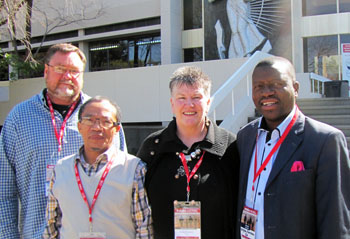
Photo: Mamosa Makaya |
The Office of Community Engagement in collaboration with Bloem Shelter, hosted a three-day Indaba on active citizenship. The focus of the event was to engage local government leaders, NGOs and social services groups on creating a society that is healthier, safer and more informed.
The over-arching theme of the Indaba centred on the strengthening of family structures, social and health service delivery, spiritual healing and counselling. Amongst the various speakers was Rev Jennifer Samdaan, Minister in the Methodist Church and community activist. During her presentation, ‘Youth, Women and Children at Risk in South Africa', she highlighted the challenges that women and youth in townships and rural areas deal with in their daily lives. One example is physical and sexual violence while commuting to school and work. Rev Samdaan’s organisation has been instrumental in engaging municipal authorities in the region of Kokstad to provide security and lighting on roads where women are most vulnerable to violent attacks as they commute from work.
Community workers discussed their contributions in the fields of marital and family counselling and mental health support services. They discussed the benefits of their collaboration with local judicial bodies and other community leaders to render services to victims of domestic violence.
Rev Billyboy Ramahlele, Director in the Office of Community Engagement, emphasised the role of leadership and the responsibility of political leaders and citizens alike to ensure accountability in the quest to build a healthier society.
Vanessa Booysen, a neonatal consultant for Newborn Care in South Africa, demonstrated the importance of bonding between mothers and their babies. She called attention to the negative effects on the development of babies when separated from their mothers and the future challenges this causes. Modern medicine also leads to fewer women giving birth naturally. Booysen stressed that "it matters how we are born". She encouraged health practitioners to go back to basics in maternal care to lessen the negative effects that pass onto children into adulthood.
The workshop concluded with an exhibition by various groups that showcased the information resources and services offered to communities in the Free State.